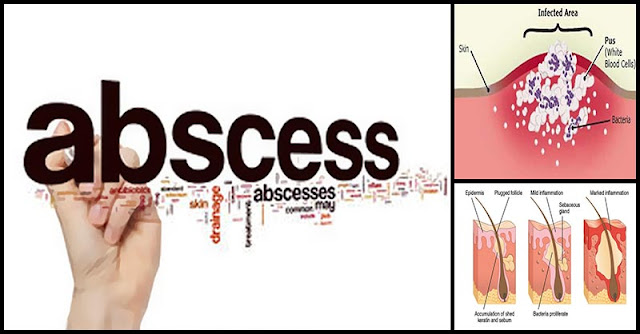Boil or abscess is a common skin infection that starts in a hair follicle or oil gland. It is a painful nodule that forms under the skin.
Boils are smaller while abscesses are larger and deeper boils which are accompanied by redness, pain and even fever, filled with pus, and is warm to touch.
Risk Factors
- A person is at high risk of developing boils or an abscess if he or she has:
- Diabetes
- Poor nutrition
- Compromised immunity
- Close contact with a person who has a staph infection
- Exposure to harsh chemicals
- Skin problems (acne and eczema)
- Poor hygiene
Causes
Usually, boils can occur on the face, armpits, neck, eyes, shoulders, and buttocks.
A type of bacteria called Staphylococcus aureus cause boils. They usually find their way into the body through a break in the skin, like having a small injury or an insect bite.
Abscess, which is similar to a pimple but larger and deeper under the skin, is caused by inflammation of hair follicle, breaks, and punctures of the skin, and obstruction of sweat and oil glands.
Signs And Symptoms
For Boils
- An increase in the size of the bump
- Swelling around the bump
- Painful red bump
- Accumulation of pus followed by the development of a yellow-white tip
For Skin Abscess
- The surrounding skin appears reddish.
- It is usually painful.
- Because of the thick membrane around it and the pus within, affected skin feels firm and spongy.
- You may even notice a pinpoint opening at the center, from where the pus might seep out.
Natural Home Remedies For Boils And Abscesses
Castor Oil
The ricinoleic acid found in castor oil has powerful anti-inflammatory, antimicrobial, and analgesic properties. Once you applied castor oil onto the affected area, it draws out the pus from the boil and relieves the pain.
Tea Tree Oil
Tea tree oil is an important remedy for the treatment of skin problems. It has antiseptic, antibacterial, and antifungal properties.
Simply mix 5 drops of tea tree oil and1 teaspoon of olive or coconut oil. Dip a clean cotton swab into the diluted oil and then, gently dab it directly on the boil. You do not need to rinse off the oil. Do this a few times a day for several days until the boil disappears.
Epsom Salt
Using warm water and Epsom salt in a bath or compress relaxes and rejuvenates the skin, and brings the boil to a head thus making it easier to draw out the pus.
In 2 cups of warm water, dissolve a ¼ cup of Epsom salt. Dip a clean washcloth in the solution and place it on your boil for 10 to 15 minutes. Repeat a few times daily until the boil begins to drain.
Turmeric
Turmeric has anti-inflammatory properties that work wonders in boil treatment. You can use it externally or you may opt to consume it. External application of turmeric dries the boils within 3 to 4 days, alleviates the pain, and prevents the recurrence of boils.
Boil 1 teaspoon of turmeric powder in 1 glass of milk or water and drink it thrice a day for 4-5 days. You can also grind together equal amounts of fresh ginger and turmeric, apply the powder onto the boil, and cover with a clean cloth. Leave it for a few hours. Rinse the area and reapply the paste 3–4 times a day for several days.
Neem
Neem has medicinal properties that can help treat various skin infections. It can fight the bacteria that causes boil and abscesses.
Make a paste by grinding a handful of neem leaves and apply it on the affected area 3–4 times a day until the boil heals.
Warm Washcloth Compress
A warm compress relieves pain, redness, and swelling. It is the easiest remedy to follow. It softens the skin layer of the boil, thus enabling the pus to travel to the surface and eventually drain the boil after repeated soakings.
Maintain Hygiene
Proper hygiene is necessary when dealing with boils and abscesses.
Avoid touching or rubbing the boil to lessen the risk of infection. Aa much as possible, keep the area clean and wash your hands every chance you get especially before and after touching/dressing an infected area and before handling or eating food. Also, see to it that the area is always covered with a sterile bandage or gauze. Doing all of these will help prevent infection and aid in the healing process.









